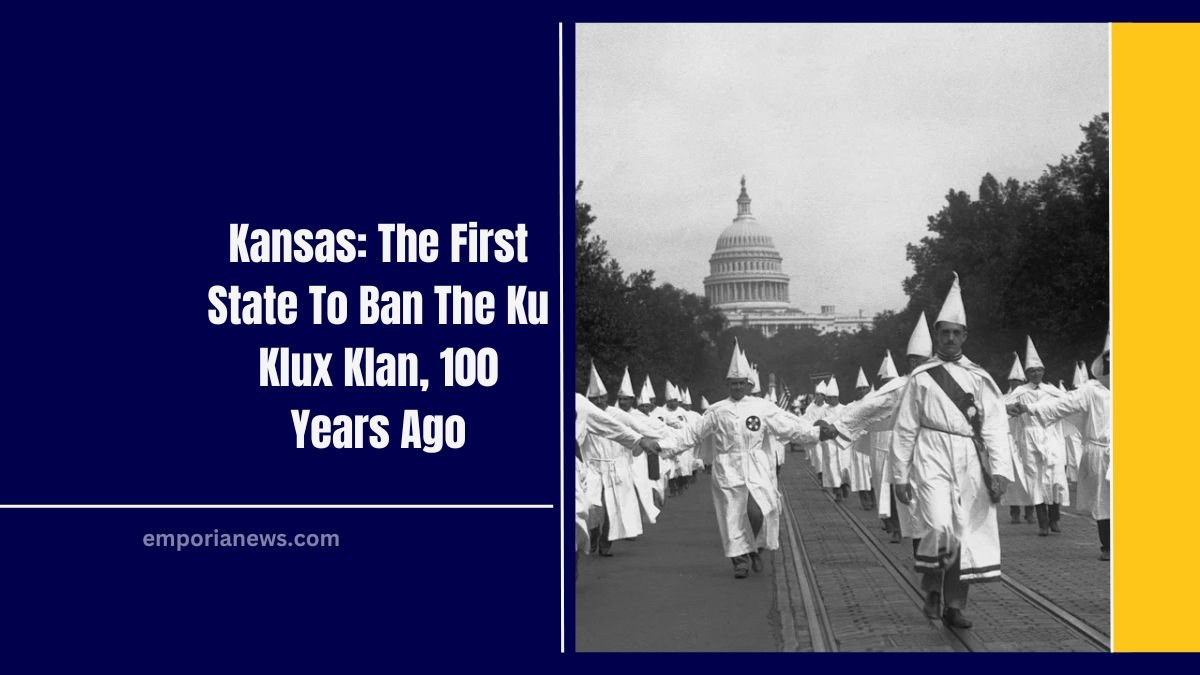Kansas made history a century ago by becoming the first U.S. state to ban the Ku Klux Klan (KKK). This bold decision came during a time when the Klan was at its peak, with its message of hate and violence spreading across the nation.
Kansas’ action set a precedent that other states would follow, marking a significant moment in the fight against organized racism and hate.
What Was the Ku Klux Klan?
The Ku Klux Klan was initially formed after the Civil War by Confederate Army veterans in the South. It quickly became a tool for terrorizing newly freed Black Americans and their allies.
Re-established in 1915, the Klan expanded its ideology to target not just Black Americans but also Jews, Catholics, immigrants, and anyone they deemed morally corrupt.
The Klan’s activities ranged from public parades and charitable donations to acts of violence, including whippings and lynchings.
By the early 1920s, the Klan’s influence was growing rapidly, with Kansas seeing its first KKK chapters emerge in 1921.
The Rise of the Klan in Kansas
The KKK’s recruitment in Kansas began in the southeastern part of the state, where economic unrest among coal miners and railroad workers created fertile ground for the group’s divisive rhetoric.
By 1924, Klan membership in Kansas swelled to nearly 100,000, making it a significant force in the state’s social and political landscape.
Despite its public image as a “fraternal organization” supporting charitable causes, the Klan in Kansas was also responsible for acts of terror, including the flogging of a Catholic mayor in southeastern Kansas.
William Allen White: A Voice Against the Klan
One of the most vocal opponents of the Klan in Kansas was William Allen White, an influential editor of the Emporia Gazette.
White referred to the Klan as a “hooded gang of masked fanatics, ignorant and tyrannical in their ruthless oppression.” In 1924, White ran for governor as an independent candidate, with his campaign focused on eradicating the Klan’s influence in Kansas politics.
Though White lost the election, his efforts were far from in vain. Kansans voted overwhelmingly for anti-Klan candidates, including C.B. Griffith, the state’s Republican attorney general, who took legal action against the group.
Kansas Supreme Court’s Landmark Decision
The turning point came on January 10, 1925, when the Kansas Supreme Court ruled that the Klan could not operate in the state without an official charter, which it lacked.
This effectively banned the Klan from conducting business in Kansas, making it the first state to take such decisive legal action against the group.
This ruling followed months of public pressure and legal battles, led by Griffith, who filed the case that would dismantle the Klan’s operations in Kansas. The decision was widely celebrated and inspired other states to take similar actions.
| Year | Event |
|---|---|
| 1921 | The Klan begins recruiting in Kansas. |
| 1923 | Klan membership in Kansas reaches nearly 100,000. |
| 1924 | William Allen White runs for governor on an anti-Klan platform. |
| Jan 10, 1925 | Kansas Supreme Court bans the Klan from operating without a charter. |
The Legacy of Kansas’ Fight Against the Klan
Kansas’ action against the Klan was a pivotal moment in the fight against hate groups in America. The efforts of leaders like William Allen White and Attorney General C.B. Griffith demonstrated the power of courage and integrity in combating racism and bigotry.
Today, Kansas’ 1925 decision remains a testament to the state’s commitment to justice and equality, serving as a reminder of the importance of standing against organized hate.
Kansas’ 1925 ban on the Ku Klux Klan was a landmark achievement in the history of civil rights in America. It highlighted the courage of individuals who stood up against hate and set an example for the rest of the nation.
As the fight against racism continues, Kansas’ legacy serves as a powerful reminder of the importance of taking a stand for justice and equality.
FAQs
Why was Kansas the first state to ban the KKK?
Kansas had strong leaders like William Allen White and C.B. Griffith, who took bold steps to expose and dismantle the Klan’s influence in the state.
How did the Klan operate in Kansas before the ban?
The Klan presented itself as a fraternal organization but engaged in acts of violence and intimidation, targeting minorities and critics.
Is the Klan still active today?
While the Klan’s influence has significantly diminished, small groups still exist in parts of the United States, often under close scrutiny by law enforcement.




